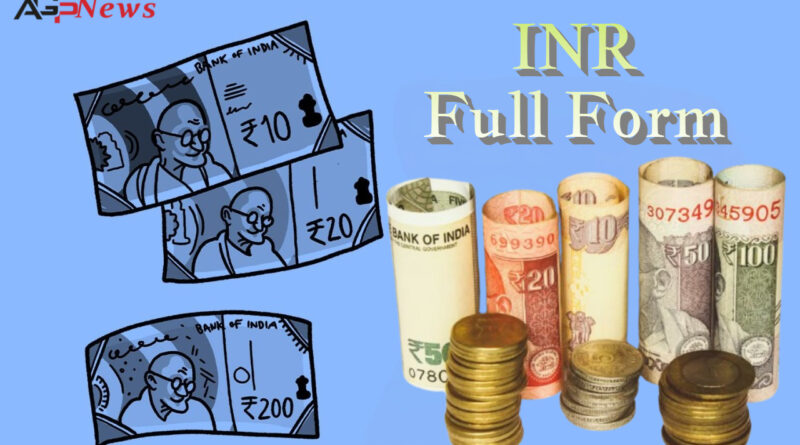INR Full Form: The Currency Powering India’s Economy
INR Full Form: The Indian Rupee (INR) is the official currency of India, subdivided into 100 paise. Deriving its name from the Sanskrit word “rupiya,” the Indian Rupee was introduced in 1947 following India’s independence from the British Empire.
INR Full Form: What is the Indian Rupee?
The Indian Rupee is managed by the Reserve Bank of India (RBI), which oversees monetary policy and regulates financial institutions, including banks and insurance companies. Currently, there are approximately 1,723.5 crore (175) rupees in circulation, with a balance of 4,810 crore (4810) rupees. INR Full Form
INR Full Form: INR Wallet and Usage
An INR wallet offers a secure method for holding, storing, and exchanging Indian currency, providing protection against financial crimes. If your country uses the rupee, or you are looking to buy products overseas with INR, consider using an INR wallet for secure transactions. Deutsche Bank Internet S.E. in partnership with the Monetary Authority of Singapore (MAS) and ABN Amro Bank N.V., offers a strategic option for INR wallets.
History of the Indian Rupee
The Reserve Bank of India issued the first Indian Rupee on December 3, 1957. The high denomination and acceptance of the Indian Rupee have made it a significant part of India’s economy. According to the Indian INX-XD Report 2018-19, the total value of Indian Rupees in circulation is 3901.83 billion or 6.9 trillion INR. The Indian Rupee is a global reserve currency, ranking as the 7th largest in circulation internationally. India holds the third-highest share in the total value of banknotes and coins in circulation, and the Indian Rupee is one of the most traded currencies worldwide by weight and volume. INR Full Form
Symbolism of the Indian Rupee
The Indian Rupee symbol ₹ features a raised rim with an obverse and reverse design. The obverse side depicts the national emblem of India and the royal Cypher of India, while the reverse side shows a depiction of a “shamla” (moon-headed Hindu Goddess). Introduced in 1616, the rupee replaced the East India Company’s currency, aligning with the British pound at par. The prefix “₹” now denotes India’s official currency. INR Full Form
Coinage of the Indian Rupee
The ₹1 coin, introduced in 1985, features a portrait of Mahatma Gandhi along with a motto beneath it. The design includes the Stupa and Kailash Temple and measures 26.9 x 33.7 mm. The ₹5 coin was introduced in 1990.
Current Usage of ₹: INR Full Form
The current denominations of the Indian Rupee include ₹2, ₹5, ₹10, ₹20, ₹50, ₹1, ₹2, ₹5, and ₹10 coins. The rupee holds a significant place in the currency market due to its stability and acceptance. It is widely used in households for exchanging goods and services and is also accepted in some countries for trading other currencies.
Conclusion
Understanding the Indian Rupee’s (INR Full Form) value is essential for both domestic and international transactions. The rupee’s value remains a subject of interest, especially for those traveling or doing business with India. In 2018, the Indian Rupee was valued at around ₹69.32 against the US dollar, reflecting a gain of 6% compared to the previous year. The rupee continues to be a crucial component of India’s robust and growing economy.
FAQs about INR Full Form
What is the Indian Rupee?
The Indian Rupee (INR) is the official currency of India, managed by the Reserve Bank of India.
When was the Indian Rupee introduced?
The Indian Rupee was introduced in 1947 after India gained independence from the British Empire.
Who manages the Indian Rupee?
The Reserve Bank of India (RBI) manages the Indian Rupee, overseeing monetary policy and regulating financial institutions in the country.
What denominations are available for the Indian Rupee?
The Indian Rupee is available in various denominations, including ₹2, ₹5, ₹10, ₹20, ₹50, ₹1, ₹2, ₹5, and ₹10 coins.
What is the significance of the Indian Rupee symbol ₹?
The ₹ symbol represents India’s official currency, featuring a raised rim with an obverse design of the national emblem and royal Cypher of India, and a reverse design depicting a “shamla” (moon-headed Hindu Goddess).
How has the Indian Rupee performed historically?
In 2018, the Indian Rupee was valued at around ₹69.32 against the US dollar, reflecting a 6% gain compared to the previous year, highlighting its importance in the global economy.




